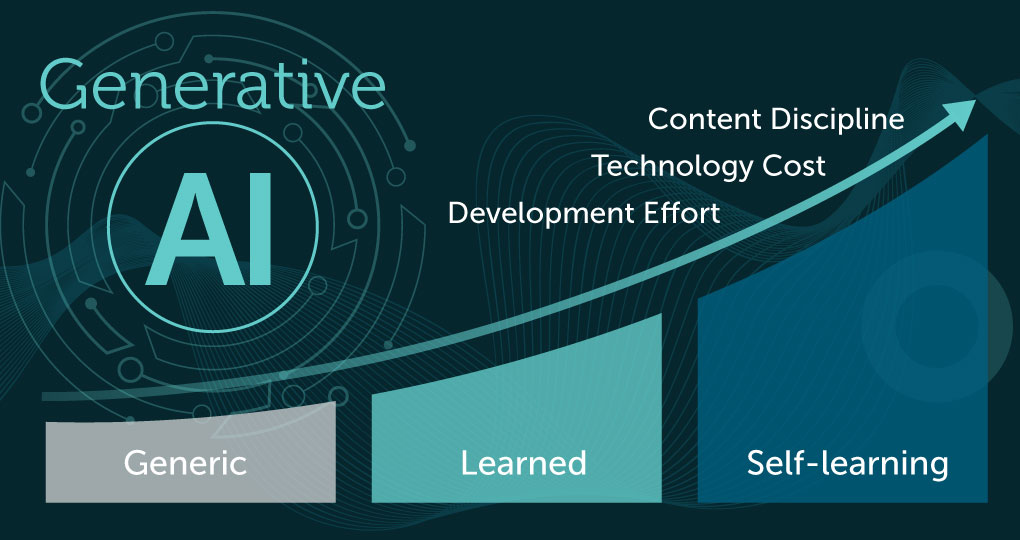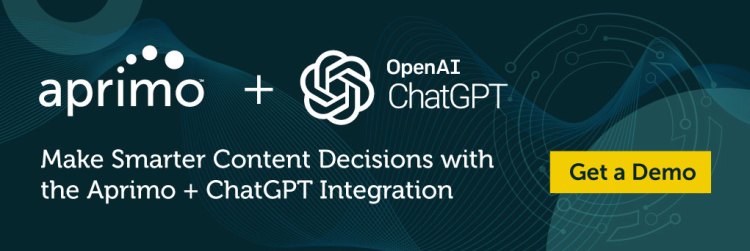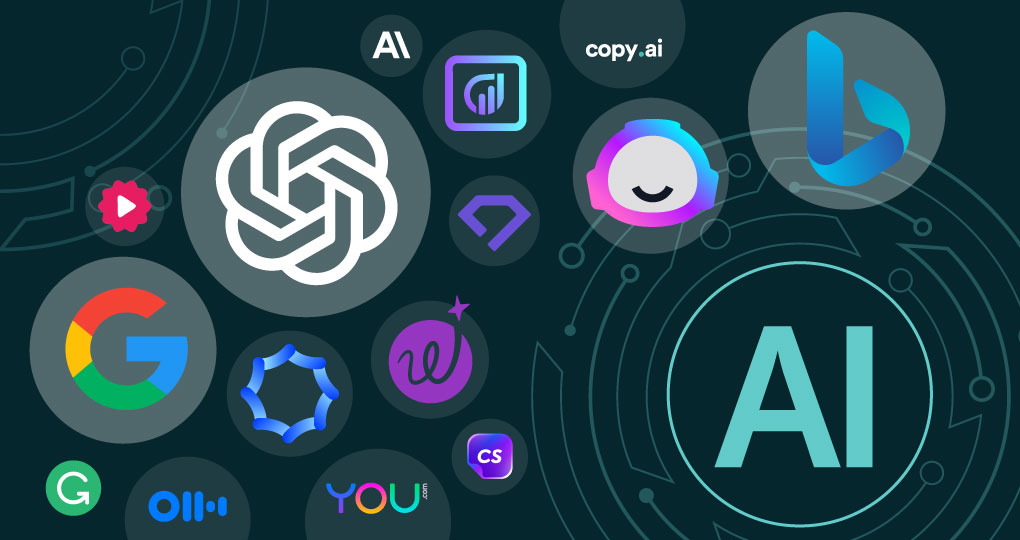Content Operations are a strategic imperative for today’s organizations, driving competitive edge by enabling organizations to deliver exceptional, personalized customer experiences. Artificial Intelligence (AI) plays a critical role in optimizing content operations across the content lifecycle, from ideation through distribution.
With new tools like ChatGPT making waves and achieving widespread adoption, the capabilities and benefits of AI are a hot topic, and the implications for content development and management are enormous. On March 1, the market felt a tectonic shift when OpenAI announced the release of API access to ChatGPT and Whisper ? an ?announcement [that] could be the start of a new AI gold rush. What was previously a cottage industry of hobbyists operating in a licensing gray area can now turn their tinkering into fully-fledged businesses.?
With a deluge of new AI tools likely to flood the market in the near future, it’s important to understand that different types of AI can deliver different outcomes depending on the requirement. Additionally, AI can come with its own set of challenges, and many new models are far from perfect. For example, Snapchat recently released its AI-powered chatbot My AI along with the warning: ?Please be aware of its many deficiencies and sorry in advance!?
There’s a lot of excitement, ?magic,? and lofty expectations around AI, but it’s important to look at AI realistically. If you’re new to AI and interested in learning more, this article is a good place to start. We’ll introduce some of the basics you should know about AI, discuss common misconceptions, and present considerations you should keep in mind as you evaluate which AI tools are right for your needs.
AI is built for a purpose
There are many AI technologies and solutions available on the market, from generic AI to self-learning and machine-learning solutions. Because AI technology is typically built to solve specific problems, different AI tools are not interchangeable.
For instance, AI services that are built to pick up visual characteristics, such as Microsoft Cognitive Services, are different from AI services built to work on content. Case in point, Aprimo’s Smart Tagging service uses a different underlying AI technology than Aprimo’s Face Detection capability. It’s important not to assume that if an AI implementation is built to solve problem A, it also solves problem B ?as it likely won’t.
Yes, this also applies to the newer generative AI technologies like ChatGPT, Jasper Chat, and Writer. Demis Hassabis, the CEO and co-founder of one of the world’s leading AI companies and a pioneer of ChatGPT, warns, ?Generative AI is the fashion and what everyone is talking about, but if you’ve been in AI for a long time, you know that fashions come and go.? He adds that the advancement of AI will likely require a combination of generative AI with other learning models.
AI is not one-size-fits-all
Just because your DAM can tag content based on visual characteristics doesn’t mean you should use it on everything you upload to DAM. AI should be used where it makes sense. In DAM applications, AI services are often and mostly used to make content more discoverable (searchable). Sometimes this can create extra privacy concerns. Installing face detection over all the content in DAM can start surfacing more content about a person than before. For instance, if you’re storing pictures of the last corporate family outing in the DAM, would you like these pictures to be discoverable when searching for similar faces?
To overcome these challenges, Aprimo AI allows you to apply the AI services using rules, therefore making it contextual to the content you are managing. Applying AI services contextually also saves processing time and is a more environmentally friendly way to look at computer processing.

Trained and self-trained AI
To add smart tags to your content, Aprimo uses standard available AI services for tagging. We typically refer to these as ?generic AI.? Aprimo is calling existing models and asking which tags are most appropriate to visually describe the content. If a user wishes to make changes to the smart tags in the DAM, these will not feed back into these generic services.
Standard available tagging services such as Microsoft Cognitive Services or Google Vision offer use models which are pre-trained under closed conditions and provide better versions of the tagging services by upgrading their APIs. These services are not self-learning based on the input of users. If all the users in the world using the standard tagging services were allowed to feed their changes back into the tagging models, the tagging model would deteriorate instead of improve because training models requires consistency.
Successful self-learning AI services are built for a specific purpose and run and learn in very specific conditions. The generic tagging services cannot be ‘tampered? with or influenced by users. The vocabulary used is fixed; you cannot add new words or ask it to use different words that you prefer. You can only make changes to the content items locally in the DAM, which the DAM will remember. If you want the DAM to tag content with your specific vocabulary, then you will need to use a learned or self-learning AI model, which is local to your Aprimo instance and which will require your content to build the model.
AI limitations vs. benefits
While an AI service is mostly right, you shouldn’t expect that it will be 100% correct?it probably won’t be. You need to look at the performance of the AI service but also keep your focus on the gains you’ll be getting by using the AI service.
Most of the Aprimo AI services in DAM will help make content much more discoverable through smart tags, similar content, similar faces, speech-to-text, visual text search, etc. without requiring any extra effort. If the speech-to-text service makes a mistake in picking up the name of a sponsor in the audio track of a video, that video will not be found when searching for the sponsor’s name in DAM. However, there is a high probability that the sponsor will be named multiple times in the video and that the name will be visually written in the video. Using a different AI service will make these instances discoverable. So, although it’s not flawless all the time, AI will likely help surface content that otherwise wouldn’t be discoverable based on only searching the content item’s metadata or manual tags.
Similarly, for generative AI, like our text improvements feature, AI improvements to your content may not give an immediately usable output, but save you lots of ideation time and effort in achieving the proper tone, simplicity, or conciseness that you desire.

The sky’s the limit for AI content operations
There are wonderful AI services available today that can help improve and overcome various operational and business challenges. The questions you need to ask yourself are, ?What’s interesting for each of our use cases, and at what cost??
Aprimo’s strategy is to focus on AI implementations that are commonly used in our products and match needs across numerous industries, and we are trying to do that at little-to-no extra cost. This is why our AI leverages many generic services to provide a base layer of AI that everyone can access and that have already demonstrated significant business value (e.g.,’Smart Tagging,’Smart Cropping,?Face Detection/Similar Faces, Speech-To-Text, Read Services (OCR), and Generative AI).
If this is not sufficient, it’s possible to extend AI implementations throughout content operations as we did with Aprimo Custom Smart Tagging. Custom Smart Tagging allows you to tag an asset using your own custom vocabulary, i.e., those terms unique to your organization. Building the custom-learned model will require some effort from both you and Aprimo to make it successful.
Self-learning models require even more technology than learned models. The technology needs to manage the feedback loop of the user and the constant regeneration of the model such that the model continues to improve and cannot deteriorate. However, this can be difficult because users who are not experienced in building models may not provide consistent enough feedback to help the model improve.
AI has revolutionized the way we create and manage content and continues to promise exciting outcomes. However, it’s important to fully understand your requirements and what capabilities different AI solutions can deliver. The more sophisticated AI services are, the more expensive they will be. As always, you need to find the balance between cost and business value.
Our philosophy at Aprimo revolves around a principled application of AI that enhances the user experience. As the importance of AI continues to grow, it is crucial for organizations to reevaluate their content operations and determine which tools are right for them. Follow along with our generative AI guidebook series to learn how to get the most value out of Aprimo and the many AI tools available.
Have you heard about our new ChatGPT integration? Check it out here!



